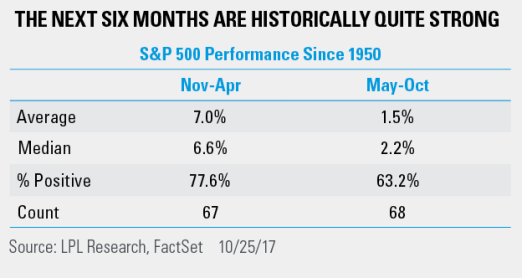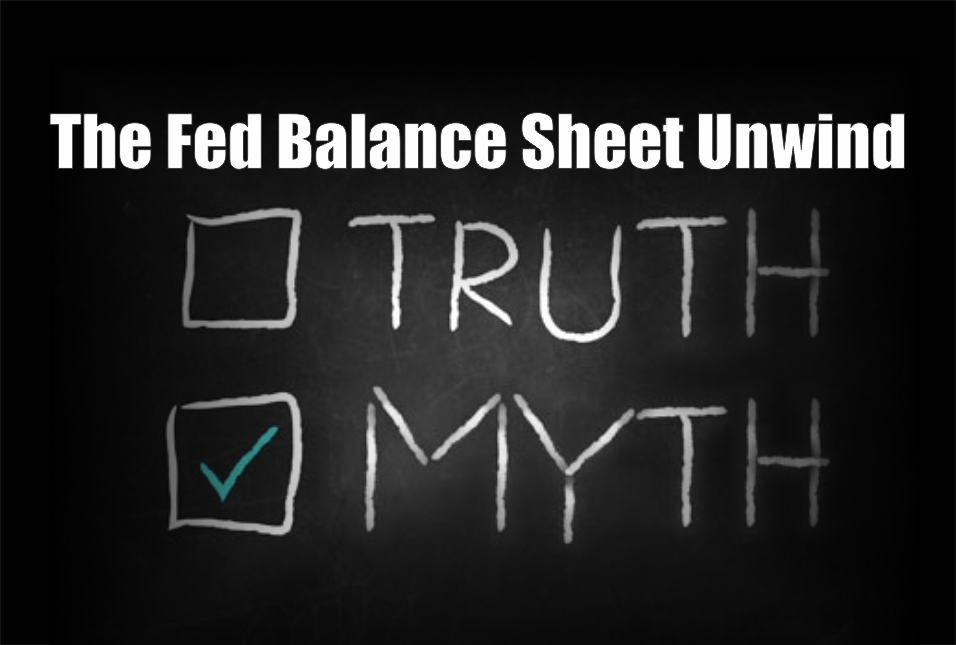by Ryan Detrick, LPL Research
So much for “sell in May and go away.” The S&P 500 Index has gained more than 6% during the historically worst six months of the year and could finish higher each of the six months (from May to October) for the first time since 1980. Then again, 2017 has been breaking records left and right, so the strength we’ve seen during this seasonally weak period shouldn’t be too surprising.
The table below shows that the S&P 500 historically does much better from November to April, with an average gain of 7.0% versus 1.5% for the other six months.
The following table, which shows average S&P 500 performance for all possible six-month combinations, confirms that the next six months have indeed been the strongest, with the ”sell in May” period of May to October being the weakest, on average.
*Please note: The modern design of the S&P 500 stock index was first launched in 1957. Performance back to 1950 incorporates the performance of predecessor index, the S&P 90.
Per Ryan Detrick, Senior Market Strategist, “Wouldn’t you know it, when the worst six months of the year are strong (like 2017), the best six months of the year that follow have tended to do even better.”
The table below outlines all the years in which the worst six-month period (May to October) was up at least 5% and what happened next: The usually strong November to April period is up 9.2% on average, above the 7.0% average return. It doesn’t stop there though, as November is up 3.4% versus the average November return of 1.5% and the return during November and December is 5.0% versus the average year of 3.2%.
Historically, the remainder of the fourth quarter (November to December), and the subsequent six-month period (November to April) saw greater average returns compared with all periods. Though this is only one metric, if the S&P 500 holds up through the end of the month, we could be in for continued above-average performance during an already historically strong period.
*****
IMPORTANT DISCLOSURES
Past performance is no guarantee of future results.
The economic forecasts set forth in the presentation may not develop as predicted.
The opinions voiced in this material are for general information only and are not intended to provide or be construed as providing specific investment advice or recommendations for any individual security.
Investing in stock includes numerous specific risks including: the fluctuation of dividend, loss of principal and potential illiquidity of the investment in a falling market.
The S&P 500 Index is a capitalization-weighted index of 500 stocks designed to measure performance of the broad domestic economy through changes in the aggregate market value of 500 stocks representing all major industries.
Indexes are unmanaged index and cannot be invested into directly. Unmanaged index returns do not reflect fees, expenses, or sales charges. Index performance is not indicative of the performance of any investment.
This research material has been prepared by LPL Financial LLC.
To the extent you are receiving investment advice from a separately registered independent investment advisor, please note that LPL Financial LLC is not an affiliate of and makes no representation with respect to such entity.
Not FDIC/NCUA Insured | Not Bank/Credit Union Guaranteed | May Lose Value | Not Guaranteed by any Government Agency | Not a Bank/Credit Union Deposit
Securities and Advisory services offered through LPL Financial LLC, a Registered Investment Advisor Member FINRA/SIPC
Tracking #1-660933 (Exp. 10/18)
Copyright © LPL Research


















